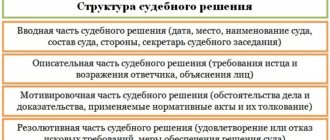If the defendant fails to appear, a court judgment may be entered in absentia.
The legislator calls such a document in absentia, since it is accepted by the court based on the evidence presented by the plaintiff. In fact, there is information about the defendant being properly notified, but he did not appear and did not file a motion to postpone the court hearing. Therefore, in the presence of certain objective circumstances, the court gives time for a possible cancellation of the decision made in a simplified manner
Chapter 22 of the Code of Civil Procedure of the Russian Federation regulates this method of resolving a dispute as a result of going to court.
The civil process is distinguished by its adversarial nature. This means the ability of the person involved in the case to prove the circumstances to which he refers, and the equality of the parties. Therefore, the court can make a decision in absentia if several conditions are simultaneously met. A court decision in absentia will be in absentia only for the defendant, since it is made in his absence and does not imply the opportunity for this party to the process to exercise the procedural rights and obligations of the person participating in the case in full.
The concept and meaning of absentee proceedings
Correspondence proceedings are an institution known to many legal systems. It is widely used in England, Germany, France. It was in these states that this institution was born and developed, as a result of which the basic modern concepts of absentee production were formed.
In the history of the Russian process, the attitude towards this institution was not always the same. Being enshrined in the Civil Code, it was successfully used for a long time in the consideration of civil cases. In the civil procedural law of the Soviet period there were no rules on absentee proceedings, and only in 1995 the absentee procedure for considering a case was restored in the Civil Procedure Code of 1964 and exists in the current Civil Procedure Code (Chapter 22).
According to the current Civil Procedure Code, absentee proceedings are a procedure established by law for consideration of a case on the merits in the event of the failure of the defendant to appear, duly notified of the place and time of the court hearing, who has not reported valid reasons for the failure to appear and has not asked to consider the case in his absence, carried out with the consent of the plaintiff.
Explaining the essence of absentee proceedings, some proceduralists view it as a procedural sanction against the defendant for violating the standards of the adversarial process, punishment for avoiding appearing at a court hearing and delaying the consideration of the case. It seems that the emphasis should be placed differently. The rules for absentee proceedings are stipulated by the following. The tradition of Russian civil procedure is to structure legal proceedings taking into account the principles of adversarialism and equality of parties. The absence of a party during the proceedings on the merits always gives reason to doubt the completeness and comprehensiveness of the consideration of the circumstances of the legal conflict. The very nature of the oral adversarial process presupposes the direct participation of the disputing parties in the court hearing. Each of them has the right not only to get acquainted with the available evidence, but also to know the arguments, motives and arguments of the opponent, which are often presented only orally during the court hearing. It is also important for the parties to have the opportunity to give their own explanations of the case at the meeting.
Consideration of the case in absentia makes it possible to maintain a balance of interests of the plaintiff present at the hearing without delay in protecting his rights due to the failure of the other party to appear and the absent defendant, who is unable to take an active part in the proceedings due to failure to appear. Thus, for the plaintiff, absentee proceedings are beneficial in that it removes obstacles to the judicial restoration of the plaintiff’s rights in the event of the defendant’s failure to appear at the court hearing. This means that judicial protection will be carried out in a timely manner, even if the defendant avoids appearing in court. For a defendant who fails to appear, the “advantage” of absentee proceedings is as follows: if the defendant did not appear for good reasons and therefore was unable to exercise his right to participate in the trial, then he is given the opportunity to challenge the absentee decision in a simplified manner and obtain the resumption of consideration of the case on the merits already with his participation.
What awaits both sides?
In general, the process is conducted as a regular court hearing.
Initially, the presence of a defendant and a plaintiff in the courtroom is determined. The court orders appearance. In essence, normative terminology, the defendant’s failure to appear is his physical absence from the courtroom. If he is at the trial, but does not show his presence, this is regarded as unwillingness to take part, an attempt to evade consideration of evidence. Next, the court decides on the possibility of applying the practice of absentee proceedings. The basis for this will be compliance with all procedural conditions. They were mentioned above.
Non-appearance of the defendant – his physical absence from the courtroom
After approving this type of review, the judge explains the procedure for conducting the hearing.
Important ! The judge takes into account various evidence and considers the case. As a result, a final decision is made.
Conditions for absentee proceedings
Article 223 of the Code of Civil Procedure names a number of conditions for consideration and resolution of a case in absentia proceedings: failure of the defendant to appear; proper notification of the place and time of the court hearing; lack of notification of valid reasons for the defendant’s failure to appear; absence of a request from the defendant to consider the case in his absence, consent of the plaintiff to consider the case in absentia proceedings.
1. The failure of the defendant to appear at the court hearing is a procedural fact that serves as the basis for conducting proceedings according to the rules of absentee proceedings and making a decision in absentia. Failure to appear means the physical absence of the defendant at a court hearing scheduled to consider the case on the merits. The failure of the defendant to appear at other court hearings, for example, at a preliminary hearing or a meeting held for the purpose of carrying out certain procedural actions, is not grounds for proceedings in absentia. The presence of a representative of the defendant at the court hearing is equivalent to the appearance of the party and eliminates the absentee proceedings. According to Art. 233 of the Code of Civil Procedure, an absentee hearing is possible only if all defendants fail to appear at the court hearing.
2. The defendant must be duly notified of the place and time of the trial. The concept of proper notification is derived from the systematic interpretation of the rules of the Code of Civil Procedure. In some cases, the court uses the legal fiction of notice (see Chapter 13 of the textbook).
The absence of notification of valid reasons for the defendant’s failure to appear means that the court is not aware of any reasons for the failure to appear at all or is aware of the reason for the failure to appear, which the court cannot recognize as valid. The defendant’s failure to appear in court may be due to various reasons: confidence that the court will correctly resolve the case without his personal participation in the proceedings, reluctance to participate in the case, desire to delay the proceedings, etc. For the court, the assumption that the defendant has no valid reasons not to appear at the meeting.
The defendant has the right to request that the case be considered in his absence. Procedurally, such a request is equivalent to a refusal to participate in the trial and has a double meaning.
The reasons for failure to appear cease to have procedural significance, and the defendant’s lack of intention to justify his legal position at the court hearing is also procedurally established. Therefore, the defendant will subsequently not be able to summarily challenge the default judgment and ask for the resumption of the trial with his participation. Accordingly, the court has the right to begin consideration of the case in absentia only after making sure that the defendant’s request to consider the case in his absence has not been made.
3. The consent of the plaintiff to consider the case in absentia proceedings is the most important condition. The law establishes this form of expression of the plaintiff’s will as consent. This means that the court, in the presence of the above conditions, is obliged to explain to the plaintiff his right to proceedings in absentia and familiarize him with the consequences of making a decision in absentia. The plaintiff's consent must be expressed clearly, clearly and recorded in the minutes of the court hearing. The plaintiff has the right to ask the court to decide the case in his absence. The law gives such a request the procedural meaning of consent to an absentee hearing of the case.
A number of issues related to obtaining the plaintiff’s consent to proceedings in absentia are not regulated by law. One such issue is the plurality of plaintiffs. What should the court do if any of them did not consent to the trial in absentia? According to the literal meaning of Art. 233 of the Code of Civil Procedure, the court must postpone the hearing. But this may not always be the best option for other plaintiffs.
Another unresolved issue is related to the participation in the case of persons who applied to the court to protect the interests of others. Their opinion regarding the procedure for considering the case may differ from the interests of the plaintiff, in whose interests the case was brought. If there is no opportunity at a court hearing to find out the consent of a materially interested person to trial in absentia, the court acts in accordance with the order of the “procedural plaintiff.”
A similar situation arises with voluntary representation of the plaintiff. The law does not classify the provision of consent to proceedings in absentia as the special powers of the representative, which must be indicated in the power of attorney. This means that the latter has the right to express consent to a decision in absentia within the framework of general powers, which may contradict the interests of the represented person.
It is important to note that the Civil Procedure Code allows proceedings in absentia only if all the specified conditions are present in the aggregate.
How is an issue resolved when multiple defendants are involved?
The consideration in absentia can be considered legal only when not a single person from the defendant’s side came. Legal and judicial practice answer unequivocally; there are no different interpretations in this case.
If there are several defendants, not a single one should appear for the trial in absentia.
The considered conditions for the entry into force of the meeting guarantee compliance with the procedural rights of not only the plaintiff, but also the defendant. The resolution of the decision indicates the time limit and procedure for the responding party if he does not agree with it and wants to file an appeal.
To avoid misunderstandings, the law clearly states how a subpoena must be served. The file must contain documents that confirm that the person is actually aware of the meeting. Upon personal service, the defendant signs the spine of the document, which is returned to the court.
Important ! If the plaintiff is against, the defendant receives information about the timing and place of the next meeting. The refusal of the party filing the claim is recorded in the minutes.
It is important that the summons reaches the defendant
Despite differences in claims, both parties receive information. The defendant has the opportunity to familiarize himself with a copy of the claim (receives it along with the summons), and the plaintiff has a copy of the defendant’s written explanation, if the court has one.
If during the consideration the plaintiff clarifies or changes previously stated claims, the subject of the claim at the meeting in absentia is not considered. The immutability of the subject of the dispute is a guarantee of respect for the rights of the defendant.
Procedure for consideration of the case in absentia
The essence of the procedure for proceedings in absentia can be formulated in a concentrated form in one rule: it is carried out in full compliance with the procedural form of consideration and resolution of civil cases, and the plaintiff is not relieved of the obligation to substantiate and prove his claim, and the court is not relieved of the obligation to determine the circumstances significant for the case and investigate evidence on a general basis, with the only difference that all this happens without the participation of the defendant.
Therefore, the procedure for considering and resolving a case in absentia proceedings corresponds to the rules of ordinary judicial proceedings established by Chapter. 15 Civil Procedure Code. However, there are some procedural features due to the absence of the defendant. In the preparatory part of the court session, the court clarifies the circumstances related to the notification of the defendant, namely: how he was notified, within what time frame, and to whom the summons was served. Having found out these circumstances, the court evaluates them and concludes whether the defendant was properly notified. Next, the court determines whether it has information about the reasons for the defendant’s failure to appear and assesses their validity.
Good reasons often include illness, being on a business trip, the presence of sick relatives or young children in need of the defendant’s care, etc.
Having established the existence of the conditions necessary for the trial of the case in absentia, the court is obliged to explain to the plaintiff his rights and obligations in this procedure and the consequences of making a decision in absentia. The plaintiff's consent must be recorded in the protocol.
The court issues a ruling on consideration of a case in absentia in the form of a separate document or in protocol form.
The most important part of the trial - consideration of the case on its merits - is characterized by the fact that it follows the entire sequence of procedural actions necessary to establish the factual circumstances of the case and examine the evidence. But during a hearing in absentia, there are no oral explanations from the defendant and no procedural actions depending on his will are allowed, for example: recognition of the claim, approval of a settlement agreement. Some restrictions on the rights of the plaintiff have been established: according to Part 4 of Art. 233 of the Code of Civil Procedure, it is unacceptable to change the subject and basis of the claim, or to increase the amount of claims. When the plaintiff takes these actions, the court cannot continue to consider the case in absentia; it must postpone the court hearing, inform the defendant about the change in the claim and invite him to appear at a new court hearing. This rule protects the interests of the absent defendant, who has the right in advance, before the trial, to know exactly what demand has been made against him and on what it is based.
If the defendant has previously presented any evidence, it is disclosed and examined according to the general rules.
The pleadings differ from the corresponding part of ordinary court proceedings only in the absence of an oral presentation by the defendant.
A decision made upon consideration of a case in absentia proceedings is called in absentia. This act of justice, resolving the case on its merits, is issued on behalf of the Russian Federation. The form, content, requirements for it, the procedure for issuance and announcement are determined by the rules of Chapter. 16 Civil Procedure Code. The decision in absentia contains introductory, descriptive, motivational and operative parts. Each of these parts reflects the features of the trial in absentia. The operative part of the default judgment has the greatest specificity. It, in addition to the court’s conclusions on the merits of the case and the distribution of legal costs, also contains an indication of two ways to appeal a decision in absentia.
No later than 3 days from the date of the decision, the court sends the defendant a copy of the decision in absentia (Article 236 of the Code of Civil Procedure).
Statement points
Let's consider a sample application on behalf of the plaintiff, containing his consent to trial in absentia.
It begins with the name of the authority to which it is sent. In this case, it is the court. You need to know its name and address. The number and nature of the (civil) case are indicated. This is followed by the details of the plaintiff and defendant: last name, first name, patronymic, contact information (residence address, among others).
The title indicates the nature of the review.
If the plaintiff agrees to trial in absentia, he must write a statement
The text is as follows. First there is an indication of the case for consideration of the claim with the name of the court.
The full name of the plaintiff, defendant and the subject of the dispute are given.
The following lists the grounds on which it is possible to hold a meeting without the presence of the other party. Such conditions are failure to appear in court, lack of written explanations on this matter to the court. Another completely legitimate reason is the desire for the case to be considered without delay. You need to write about this too.
Refer to the article of the Code of Civil Procedure of the Russian Federation, which contains all the conditions.
Then you need to highlight the request to consider the case in absentia. Data from the court, the defendant, and the plaintiff are provided. Confirmed by number and signature.
The application shall indicate the details of the defendant and plaintiff
Important ! Only cases brought by lawsuit are subject to this practice. Therefore, the procedure in question is only available in the court of first instance.
If the defendant is not in the courtroom, the question arises about the possibility of conducting the work in absentia. If all the formalities described above are observed, the court announces the ruling. It does not violate the form of the protocol.
Ways to appeal a default judgment
The Code of Civil Procedure provides two ways to appeal decisions in absentia. The first of them (usual) - filing an appeal - is available to all persons participating in the case. The second is the defendant’s appeal to the court that made the default judgment with a request to review this decision by the same court on the basis of a new consideration of the case. Thus, the defendant has two options to challenge the default judgment. There is a significant difference between them. When appealing to a higher authority, the person asks to cancel the decision, since it is illegal and unfounded, since the court made errors in the application of substantive and procedural law. The nature of the second method is different. In the UGS it was called “revocation of a decision in absentia,” which more accurately reflected its essence. In pre-revolutionary literature there was the following explanation of the essence of a review: “In a review, the litigant seems to say to the judges: until now you have listened to my opponent, in turn I ask you to listen to me. When I reveal my evidence, then you, better illuminated, will remove my conviction and judge the case in my favor.” Consequently, the motive of the defendant who decides to use this method is to ask the court to give him the opportunity to defend his case in a new adversarial proceeding, taking into account the advantages of personal participation in it.
The defendant has the discretion to determine which appeal option to use. Their simultaneous use is unacceptable.
Part 1 art. 237 of the Code of Civil Procedure provides that the defendant has the right to file an application to the court that made the decision to cancel it within 7 days from the date of delivery of a copy of this decision. Having satisfied the application, the court cancels the default judgment and begins a new consideration of the case. The refusal to satisfy the defendant's application for review of the default judgment is formalized by a ruling.
A defendant who wishes to file an appeal against a default judgment may exercise this right within a month from the end of the 7-day period established for the “revocation” of a default judgment.
The plaintiff and other persons participating in the case have the right to appeal a decision in absentia only to a higher court if the period allotted to the defendant for a simplified appeal has expired, or if the court does not satisfy the defendant’s application to review the decision in absentia.
Filing an application to cancel a default judgment. The requirements for the defendant’s application for review of a default judgment are established by Art. 238 Code of Civil Procedure. It must contain: the name of the court that made the default judgment; name of the party filing the application; justification of the valid reasons for failure to appear at the court hearing and evidence confirming them; evidence that may influence the content of the court decision; request of the party filing the application.
This information is necessary in order to determine whether the appropriate person is filing the application and whether the court is competent to consider it? To confirm the validity of the reasons for failure to appear, any means of proof provided by law may be used. The requirement to provide evidence influencing the merits of the decision should be understood broadly. The defendant can not only present evidence to the court in the proper sense, but also assert facts that are not subject to proof, object to the authenticity of documents presented by the plaintiff, etc. The application must contain a list of materials attached to it.
This is necessary to inform other participants in the case about the defendant’s evidence in advance. They are sent copies of the application and attached documents.
The application is signed by the defendant or his representative authorized to do so. The law does not provide for the payment of a state fee for an application to review a decision in absentia.
The question of the consequences of the defendant’s failure to comply with the requirements for this application remained unresolved. It seems that it is possible to apply here by analogy to Art. 323 of the Code of Civil Procedure - providing for leaving the appeal without progress with the appointment of a deadline for correcting deficiencies.
An accepted application is considered by the court in a court session within 10 days from the date of its receipt. Persons participating in the case are notified of the time and place of the court hearing, but their failure to appear without good reason is not an obstacle to the consideration of the application.
Powers of the court and grounds for reversing a default judgment. As a result of considering the application for review of the decision in absentia, the court issues a ruling by which: 1) it refuses to satisfy the application, 2) it cancels the decision in absentia and resumes consideration of the case. The determination is made in the form of a separate document in compliance with all general requirements. It provides an assessment of the circumstances that collectively serve as grounds for reviewing the default decision.
The first of the powers is applied by the court that considered the application if it recognizes that there were no valid reasons for the defendant’s failure to appear at the court hearing, which he could not inform the court in a timely manner; that the existence of these valid reasons has not been proven; the defendant does not have serious arguments against the default decision, and no evidence has been presented that could affect the substance of the previously adopted decision.
Another power is applied by the court in case of opposite conclusions: about the presence of good reasons for the defendant’s failure to appear at the court hearing and their proof, about the sufficiency and materiality of evidence that can change the legal qualification of the legal relationship between the plaintiff and the defendant given in the absentee decision.
After the default judgment is cancelled, the court resumes consideration of the case. The proceedings are conducted according to the general rules established by the Code of Civil Procedure. The failure of the defendant to appear at the resumed trial cannot lead to proceedings in absentia.
What are the differences?
The court's decision will include the following attributes:
- the word “absentee” is added to the name;
- the text contains the name of the documents, legislative acts on the basis of which the hearing was held in absentia;
- the fourth part contains an indication of the deadline and method of filing an application to cancel the decision.
A copy of the document must be delivered to the defendant within three days. If the plaintiff was not present at the hearing, a copy is sent to him. In order to guarantee delivery, have evidence or lack thereof, the letter is issued as a registered letter with mandatory delivery notification.
A copy of the court decision is delivered to the defendant within three days
In questions there is often confusion between several concepts that are similar to the first type. The court makes a decision immediately after the hearing, without leaving the building. It is this that will form the basis of the operative part, which is announced at the end of the meeting. The reasoning decision is not necessarily made on the same day. The law allows five days for this procedure.
Important ! This allows court members to delve into all the details and consider them in more detail.
Judicial practice provides examples of how judges prefer to conduct proceedings in the usual manner, while proceedings in absentia are required. This is most often encountered by participants in proceedings in cases where the outcome can be fairly easily presented in advance. The judge's experience allows him to make a reliable forecast based on the analysis of the information involved. Once a direct decision has been made instead of an absentee one, it is almost impossible to go back to the beginning and reopen the case. Higher authorities are not inclined to accept arguments why the trial court chose this particular path. The appellate authority does not have the right to overturn the decision.
Important ! It will not be possible to correct the situation by resubmitting the case for a new trial.
It will not be possible to resubmit the case for a new trial.
Peculiarities
Let's consider a situation where a copy of the decision was not received by the defendant for some reason. That is, the court at the place where the process was conducted did not receive a delivery notice. What measures are provided until the decision comes into force? The case is postponed, there is a possibility of violation of the rights of both the defendant and the plaintiff.
The envelope is returned to the court without a receipt mark. The date from which the period is counted will be the day the letter is received at the post office at the location of the court. This practice is used, although it is not mentioned in regulatory documents.
Important ! The deadline will pass, and the defendant will receive a copy of the paper indicating that the decision is in effect.
Sometimes the defendant does not receive a copy of the decision by mail - then the case may be delayed
Unfortunately, the process may not end there. The law determines the possibility for the defendant to appear before the court with a statement requesting that the decision be overturned. Another option is an appeal. Practice shows that the court can restore the period during which it can appeal.
Important ! The practice of making a judgment in absentia is common. The legislation prescribes all the conditions, terms and development options quite precisely. But there are always features that may arise during the consideration of the claim. Advice from an experienced lawyer will help you choose the right tactics and respond to events in a timely manner.
If the court decision has not really been received by the defendant, he may request its cancellation






